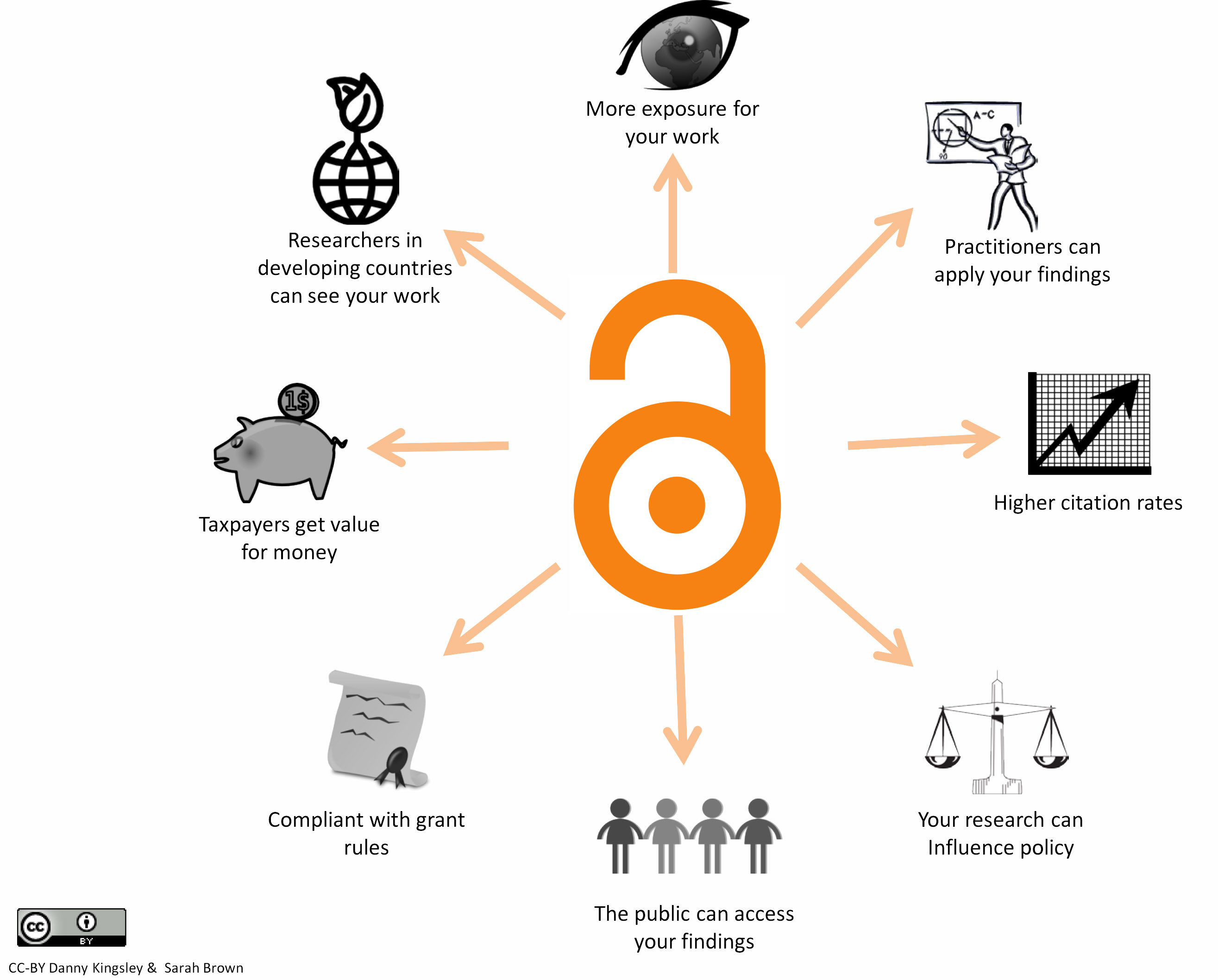About Open Access
What is Open Access
Simply put, Open Access is the process of making scholarly outputs feely available online. Under the current system of publication, anyone wanting to read the results of publicly funded research projects needs to be a member of an academic institution or pay money for a subscription to access it. This represents both a barried to information and poor value for the public whose tax helped to fund the research. Open Access seeks to remove these barriers by making research outputs available to anyone who wishes to see them.
Many organisations which fund research have realised that this inequality of access exists and now mandate that the outputs of any research they fund should be made openly available
Types of Open Access
There are several mechanisms by which researchers can make their work available and different funders have different policies on how this should be done. There are two main methods which researchers will come across.
Green open access is the most common option where an author publishes their research paper and also deposits the paper for free in an open access repository such as Stirling’s own repository - STORRE. Often the journal will stipulate restrictions on the use of the open access version, such as an embargo period or the format of the article. All papers deposited in STORRE take account of publisher embargo periods.
Gold open access (also known as author-pays-publishing or born-open content) is where the researcher (or more commonly their institution) pays an Article Processing Charge (APC) to the publisher for their paper to be made immediately publically accessible by the publisher on the journal’s website.
Benefits of Open Access

Researchers
Publishing open access has a number of important benefits for you as a researcher and potential impact of your research. Articles which are made open access are more accessible to a wider audience and avoid the cost barrier for those without subscription access to journals. The associated benefits are:
- The potential for increased citations for your published works
- Enhancing the profile of your research
- Funders see a greater return on their investment
The benefits of increasing accessibility of the outputs of research will extend to long-term economic and societal benefits and therefore the Government and funders of research are driving reforms in this arena.
Public
Open Access publication means that the public are able to access more scholarly information than ever before, something crucial in an age of fake news. It also represents better value for money as they do not have to pay to see the results of work which they have helped to fund through taxes. Open Access increases the availability of work meaning that both researchers in developing countries and practitioners with no academic affiliation are able to use the latest findings in their own work.
How can I make my outputs open access?
Green Route
Stirling has been a pioneer of open access publishing and since 2007 and we encourage our authors to deposit all research papers in Stirling’s institutional repository – STORRE. Depositing your article in STORRE means that you are making your publication available open access via the green route. Journals will normally have an embargo period for placing an article in a repository – this will be managed automatically by STORRE ensuring the paper you deposit will only be made publically available once the publisher’s criteria have been met.
For further detail about depositing your article in STORRE see the STORRE webpages.
Gold Route
The gold route is offered by two main journal types:
Open Access journals - Some journals such as BioMed Central and PLoS ONE are purely open access journals and never charge the reader to access an article. Instead, charge the author an article processing charge (APC) to publish in the article.
Hybrid journals – journals which use the subscription model (articles are only available following payment or subscription by the reader) but also offer authors the option of paying an APC so that their publication is made available immediate and without a fee to readers via the publisher. These journals continue to charge subscription costs to universities. These journals allow publication via the green and gold routes.
We are committed to enabling open access publishing- see our Open Access and Article Processing Charge (APC) Fund Policy.
Choosing your journal - be aware of predatory journals
What to check if you are invited onto the board of an Open Access journal you've never heard of
